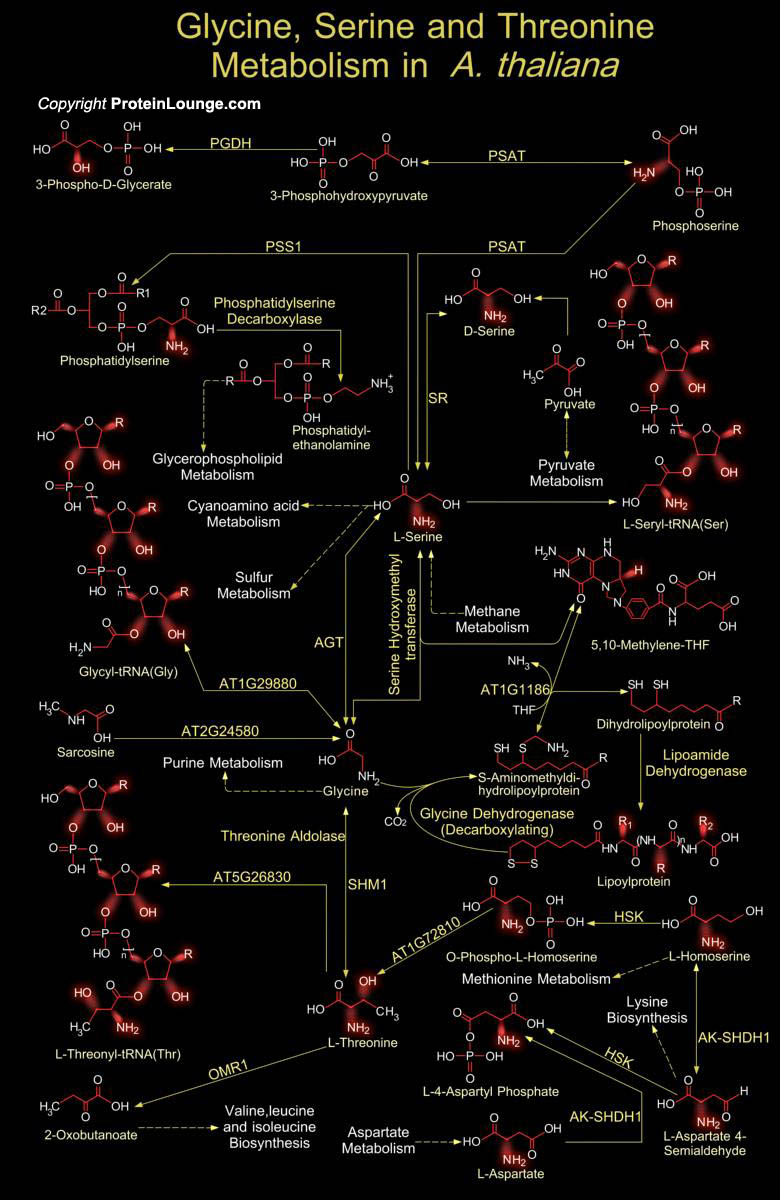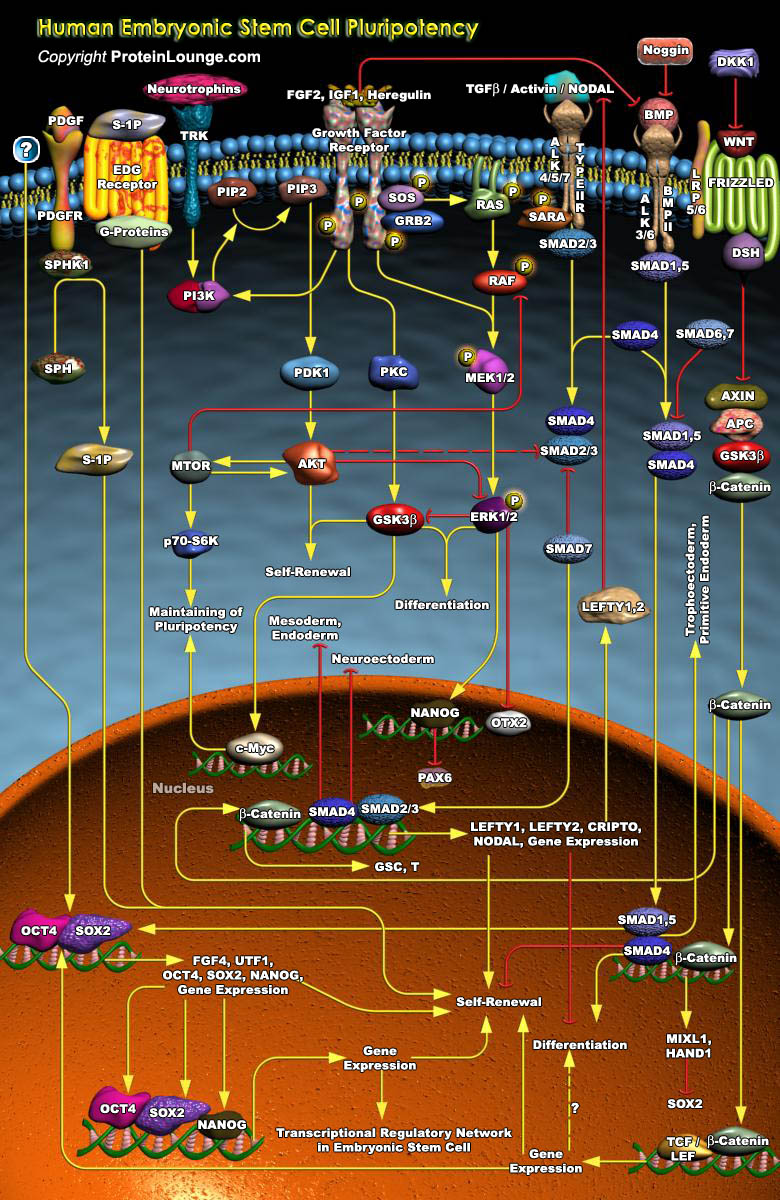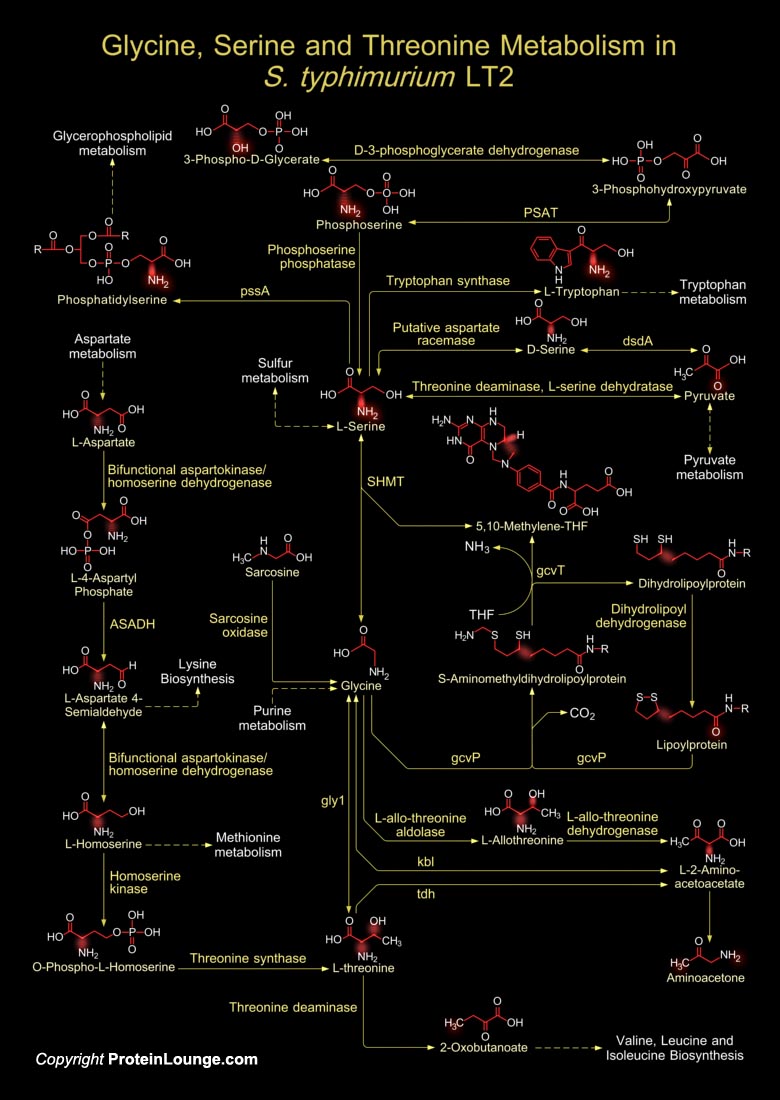Featured Pathways

Cellular Lipid homeostasis in mammalian cells is regulated through the end-product feedback regulation of Lipid synthesis by a family of membrane-bound transcription factors designated SREBPs (Sterol Regulatory Element–Binding Proteins) that control the flux of cellular metabolites into the major Lipid pathways. The mammalian cell continuously adjusts its Sterol content by regulating levels of[..]

Amino acids are not only the building blocks of proteins, but also serve as precursors for other important plant metabolites and constitute an essential part of human and animal diets. The biosynthesis and degradation of the twenty standard Amino acids represent the complexity and ingenuity of metabolism at its most astounding. Plants are able to generate all 20 Amino acids necessary for[..]

Glycine and Serine are two non-essential amino acids in humans, which have important roles in the Central Nervous System. Serine, a constituent of brain proteins and nerve coverings, is important in various processes like dendritic outgrowth, formation of cell membranes, metabolism of Purines and Pyrimidines, Myelin formation and muscle synthesis, synthesis of nucleotides and neuroactive amino[..]

Glycine and Serine are two non-essential neurotrophic amino acids that play an essential role in neuronal development and function in M. musculus (Mus musculus). They share similar neurotrophic effects in promoting neuronal survival and differentiation of sensory ganglia, hippocampal neurons, and cerebellar Purkinje cells. In M. musculus, interplay between Glycine[..]

Glycine and Serine are two interconvertible non-essential amino acids found abundantly in almost all cell types. They serve as active ligands for many metabolic pathways where they aid in the synthesis of other essential metabolites, such as Glycogen, Glyoxylate and Pyruvate, which are of immense importance for many cellular and biological processes. The metabolic pathway that correlates[..]

MI(Myocardial infarction ) causes the loss of cardiac tissue and scar formation, which ultimately lead to heart failure. According to the World Health Organization, heart failure initiated by MI and coronary artery disease accounts for 29% of deaths worldwide. However, human heart tissue does not regenerate spontaneously, thus “regenerative medicine” represents a promising[..]

ESCs (Embryonic Stem Cells) are Pluripotent cells capable of differentiating into any cell type of the body. Only three species of Mammals have yielded long-term cultures of self-renewing ESCs- Mice, Monkeys, and Humans. Human ESCs are derived from Blastocysts, multicellular structures originating from four cleavages of fertilized oocytes. Isolated from the ICM (Inner Cell Mass) of[..]

ESCs (Embryonic Stem Cells) are a population of Pluripotent, Self-renewing cells which can proliferate indefinitely and contribute to the formation of basically all cell types in vitro and in vivo. The study of mammalian ESCs, especially Mouse ESCs, has provided valuable insights into early embryogenesis in mammals. Mouse ES cells are derived mainly from the ICM (Inner Cell Mass) of the Mouse[..]

ESCs (Embryonic stem cells) are Pluripotent cells derived from the ICM (Inner Cell Mass) of Blastocyst-stage embryos. These cells have two distinctive properties: an unlimited capacity for Self-renewal and Pluripotency. The capability for Self-renewal and the Pluripotency of ESCs seem to be under the control of multiple transcriptional factors, most common among them[..]



In the life cycle of Plasmodium spp, Erythrocytic stage is very important involving four stages viz. Merozoite stage, ring stage, Trophozoite stage and Schizont stage. On being released from the hepatocytes, the Merozoites enter the bloodstream prior to infecting red blood cells. They use the Apicomplexan invasion organelles to recognize and enter the host erythrocyte. The parasite[..]





















